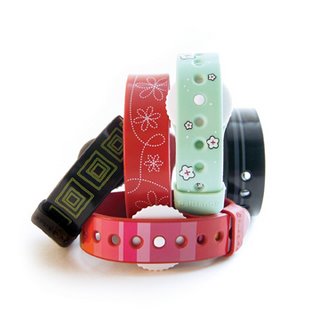Mal de Mer and More

The only drawback is that the bands don’t hold up very well. With age, they stretch – especially if they get wet – so that the button doesn’t stay in place, rendering them ineffective.
Since Mr. Nausea is not my favorite traveling companion, I was glad to discover PsiBands (http://www.psibands.com/) that operate on the exact same drug-free principle, but are made of latex-free medical grade synthetic rubber. Not only are they waterproof, but they are also fully adjustable (like a watchband).
PsiBands were invented by two young mothers who were looking for a way to control the effects of morning sickness. They are also recommended to control the nausea caused by chemotherapy and anesthesia.
PsiBands are available nationwide at more than 5,000 Rite Aid locations, as well as other chains such as REI, Longs Drugs, Pharmaca, and Drugworld stores. Online, they are available through Amazon.com and Drugstore.com. Price varies per retailer, but ranges from US$14.99 – 19.99.
Psi is pronounced “sigh,” as in breathe a sign of relief – which is just what you’ll do when you wear them.
Labels: advice, chemotherapy, mal de mer, morning sickness, motion sickness, natural healing, nausea, PsiBands, relief, remedies, sea sickness, staying healthy, tips, traveling


